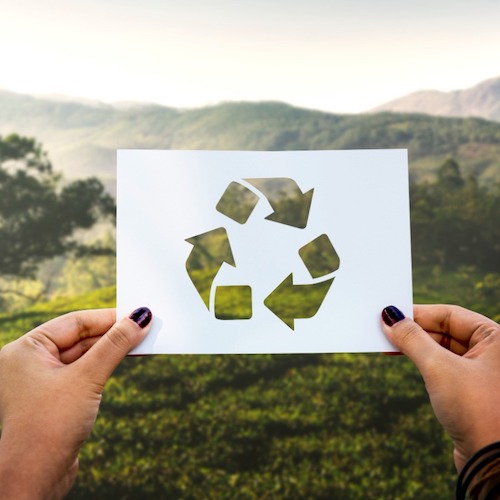Five ways businesses can make a sustainable difference by making small changes to their paper recycling culture

By Edith Leeuta, CEO of Fibre Circle
South Africa’s paper recovery rate is well above the global average at 61.4%. This means that 1.1 million tonnes of paper and paper packaging were diverted from landfill in 2021.
Paper is a renewable product, made from sustainably farmed trees or recycled paper. Its fibres can be recycled up to 25 times according to a study conducted by Graz University of Technology in Austria.
One tonne of recovered paper saves three cubic metres of landfill space. Not only does the recovery and recycling of paper products extend the life of our landfills, it also ensures a sustainable supply of good quality, usable paper fibre for locally made paper products that we all use every day, from cardboard boxes to toilet paper.
Even the most ‘paperless’ businesses still use recyclable paper products – the large cardboard boxes that protect new computer equipment, grocery and take-away paper bags, food and beverage packaging, milk cartons, and even the inconspicuous toilet roll core.
By making small changes to their recycling practices, businesses can make a big difference to the circular economy through the reduction of usable “waste” going to landfill and sustaining jobs.
While many businesses may have waste management and recycling practices in place, there is often a lot of contamination that takes place between the paper going into a bin and it being separated for recycling – if it even gets that far.
There are five things that businesses can do to ensure that their used paper products are kept in the recycling loop and out of landfill.
Separate and educate
The thing about paper is that it needs to stay clean and dry to be viable for recycling, and separation at source is the first step in the greater recycling process.
Wet waste – food, tea bags, cigarette butts and soiled take-away containers – contaminates the paper and reduces its value. Paper also starts to degrade once wet.
Reduce the risk of this by installing well-marked, paper-only bins in key locations: printing/copying stations, meeting and break rooms, kitchen areas and reception. For every paper-only bin, there should be a bin for other recyclables and a wet waste bin alongside it.
It is important to educate employees around what is recyclable and what is not, and why there are separate bins. Empower cleaning teams with the correct recycling knowledge so that recyclables are not mixed with wet waste at the end of the working day.
Make it easy and time-efficient for employees to recycle
We are all human. Nobody likes to walk too far to throw something away. An Australian study showed that paper recycling rose from 28% with one bin per office, to 94% when paper trays were located on desks.
Each desk needs a paper-only bin or box, but make sure that employees know it is only for clean and dry paper and paper packaging.
Know your recyclables
These paper products are recyclable:
- Brown cardboard boxes and packaging
- Moulded fibre protective packaging
- Copy and printing paper
- Notebooks (minus wire binding and non-recyclable covers)
- Paper packaging from cereal, tea, sugar, and other dry goods
- Coffee cups (minus the liquid and the lid – this made of polystyrene but can be recycled via other means)
- Moulded fibre take-away cup holders
- Magazines and newspapers
- Milk and juice cartons
- Paper grocery bags and take-away food bags
- Pizza boxes and burger clam shells – no food residue!
- Tubing from kitchen towel rolls and toilet rolls
While the list of recyclable paper products is vast, there are also several paper-based items that should not be recycled as they can cause problems in a paper recycling mill:
- Tissues and toilet paper
- Paper towel and paper napkins
- Dirty paper plates
- Cigarette butts
- Laminated paper
- Carbon copy paper
Appoint a recycling champion
Your recycling champion needs to drive and monitor the programme, and make changes when things are not working.
If you don’t have a waste management company, partner with a recycling collection agent – a big company, a smaller business or an informal collector. You can even support a local school or charity’s recycling fundraising initiatives.
It is important that your recyclables get to where they need to be – back into the recycling loop. You should never the recycling pile get too big.
Make it known
Visitors, suppliers and customers should know that your business recycles so they can support – and not derail – your efforts.
Download Fibre Circle’s handy printable posters to display in key areas. [LINK]
By making these small changes to its waste habits, the business sector can make a big difference to its waste footprint.
A side note about trees and recycling…
Not printing that email, and recycling paper does not “save trees”. Trees are farmed for their wood, which is converted into paper products. Only a small percentage of trees are harvested each year, and new trees are planted to replace them. This means there are always trees at different stages of their growth cycle, and a sustainable supply for years to come.
Edith, the first black woman appointed to lead a South African PRO, heads up Fibre Circle and is working with government and industry stakeholders on the implementation of the sector’s extended producer responsibility programmes. Among her career accomplishments is the establishment of GR33N Africa, a not-for-profit organisation created to educate communities on sustainable environmental practices.


.svg)











